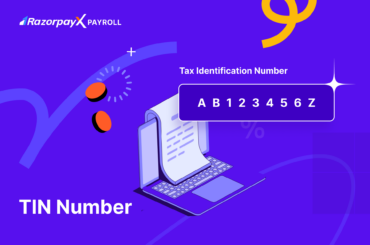Salary hikes are exciting as they make way for career growth and development. Understanding the nuances of salary hike percentages is also crucial for career planning and financial growth. It allows you to gain insights into the factors affecting your income and financial goals. Whether you are already expecting an appraisal, anticipating a new job offer, or simply evaluating your earning potential, knowing how to calculate your salary hike percentage can help you negotiate better.
In this comprehensive blog, we will discuss the process to calculate salary hike percentage with practical examples, along with other aspects that you should keep in mind when actually calculating.
Table of Contents
How to calculate salary hike percentage?
If you are wondering how to calculate your salary hike, then we will first start by exploring the formula that can help give you an idea about your expected raise.
Salary Hike Percentage Formula
Salary hike percentage can be calculated with the following formula
Salary Hike Percentage = (New Salary − Current Salary) / Current Salary x 100
This gives the % of increase of your salary. If you have the % of increase and wish to calculate your new salary, this is the formula:
New Salary = Current Salary + {(Salary Hike Percentage / 100) x Current Salary}
Let us look at an example to understand.
Examples of Salary Hike Calculation
Example 1: An example of how to calculate the percentage of hike in salary
Let’s say that the current salary of Shubham is INR 30,000. The company is giving him a hike of 40% on his current salary. Then the future salary will be calculated as follows –
| Current Salary (in INR) | Hike Percentage | Formula | Future Salary/ Salary after Increment (in INR) |
| 30,000 | 40% | 30,000*40% = 12000 | (30000+12000) |
| Total Future Salary | 42000 |
Let us take forward the example given above. Let’s say the current salary of Raju is INR 30,000 and his future salary after increment is INR 42,000. Then the percentage of hike in salary will be calculated as follows –
| Current Salary (in INR) | Future Salary/ Salary after Increment (in INR) | Formula* | Percentage Hike |
| 30000 | 42000 | (42000-30000)/30000*100 | 0.4*100 |
| Percentage Hike in Salary | 40% |
Example 2: How to Calculate a 10 Percent Hike in Salary?
Now, suppose you want to calculate your salary hike if you have gotten a raise of 10%. Considering your monthly salary is INR 30,000, then this is what the calculations will look like –
| Current Salary (in INR) | Salary after Increment (in INR) | Formula* | Percentage Hike |
| 30000 | 33,000 | (33000-30000)/30000*100 | 0.1*100 |
| Salary Hike Percentage | 10% |
Common Reasons for Salary Hike
There are many reasons why a company offers salary hike to an employee.
To inspire and motivate
A salary hike is a good way to motivate employees to continue to work and contribute positively to the company. Businesses that offer good salary hikes and financial incentives typically have lower attrition rates and are able to retain employees for longer.
To reward and recognise
Employees who have been consistently performing well and contributing to the growth and success of the company often receive salary hikes as a form of recognition. This reward acknowledges their hard work, dedication, and valuable contributions, encouraging them to maintain high levels of performance.
To support rising costs of living
Inflation causes the cost of living to consistently increase every year. Companies offer salary hikes to employees as a way of ensuring employees are able to maintain their purchasing power and way of life through rising prices.
Factors Affecting Salary Hikes in India
Now that you know how to calculate your salary hike percentage, it is time to consider the key factors that can influence it. Salary hikes are often systematic and can be influenced by the following factors.
- Your Performance and Contribution – This is the biggest factor that impacts your salary hike. Exceptional performers who exceed targets and add significant value to the company often receive higher hike percentages.
- Industry and Market Trends – Companies benchmark salaries against competitors and industry averages for similar roles and experience levels. Depending on the demand of your role, your salary hike can be higher or lower.
- Role and Responsibilities – Your salary hike also depends on how much value your role brings to the company. Also, a promotion or an increase in job responsibilities can lead to a larger hike percentage.
- Company’s Financial Health – Your company’s profitability can directly impact its ability to offer salary hikes. During prosperous times, hikes might be more generous, while leaner periods could lead to more modest increases.
Understanding these factors can help you gain a better understanding of the appraisal process and better anticipate and even negotiate your raise.
Skip the hassle of manual calculation with RazorpayX Payroll
Now you can calculate payroll and salary hikes with just 3 clicks with RazorpayX Payroll. RazorpayX Payroll provides automatic salary calculation after considering the statutory deductions and compliances like PF, PT, TDS & ESIC.
Why Use RazorpayX’s Salary Hike Percentage Calculator?
Here are the other benefits of RazorpayX Payroll that also helps with salary hike percentage calculations –
- End-to-end employee management with offer letter generation and CTC calculator
- Automated salary deductions based on statutory compliances
- Automated group health insurance
- Comprehensive leave management system
To Sum Up
- Knowing salary hike calculations can empower you to understand your earning potential and make informed career decisions.
- By using the formulas provided in this blog, you can find out your increased salary and plan your financial goals accordingly.
- Companies offer salary hikes to keep employees motivated and reward them for their work throughout the year.
- It is essential to understand the key factors that impact this raise, such as your performance, industry trends, and the company’s profitability, to have realistic expectations about your salary hike.
Read more:
FAQs
1. How do I calculate salary hike percentage?
The salary hike percentage is calculated using the following formula –
(New salary – Old Salary) / Old Salary * 100 = Hike percentage.
- The first step is to find the difference between the new salary and the old salary
- Then the amount obtained is divided by the old salary.
- The figure thus obtained is multiplied by 100 to express it in percentage.
2. How is a 30 per cent hike in salary calculated?
A 30 % hike in salary is calculated as follows –
For better understanding, let’s assume the current salary to be INR 10,000
| Current Salary (in INR) | Hike Percentage | Formula | Future Salary/ Salary after Increment (in INR) |
| 10000 | 30% | 10000*30% = 3000 | (10000+3000) |
| Total Future Salary | 13000 |
3. Are salary hikes based on gross or net salary?
Salary hikes are generally calculated based on your gross salary. While your net or in-hand salary will increase, the percentage is more typically applied to your gross earnings before any deductions.
4. How often are salary hikes offered in a company?
Salary hikes are offered annually during appraisal cycles in most companies. However, some companies may also offer quarterly or mid-year appraisals and promotions for exceptional performance or retention purposes.
5. What is a good salary hike percentage?
A good salary hike percentage varies based on industry, individual performance, and the financial condition of a company. Generally, a 5-10% annual hike is considered standard, while anything above that is considered to be good.





